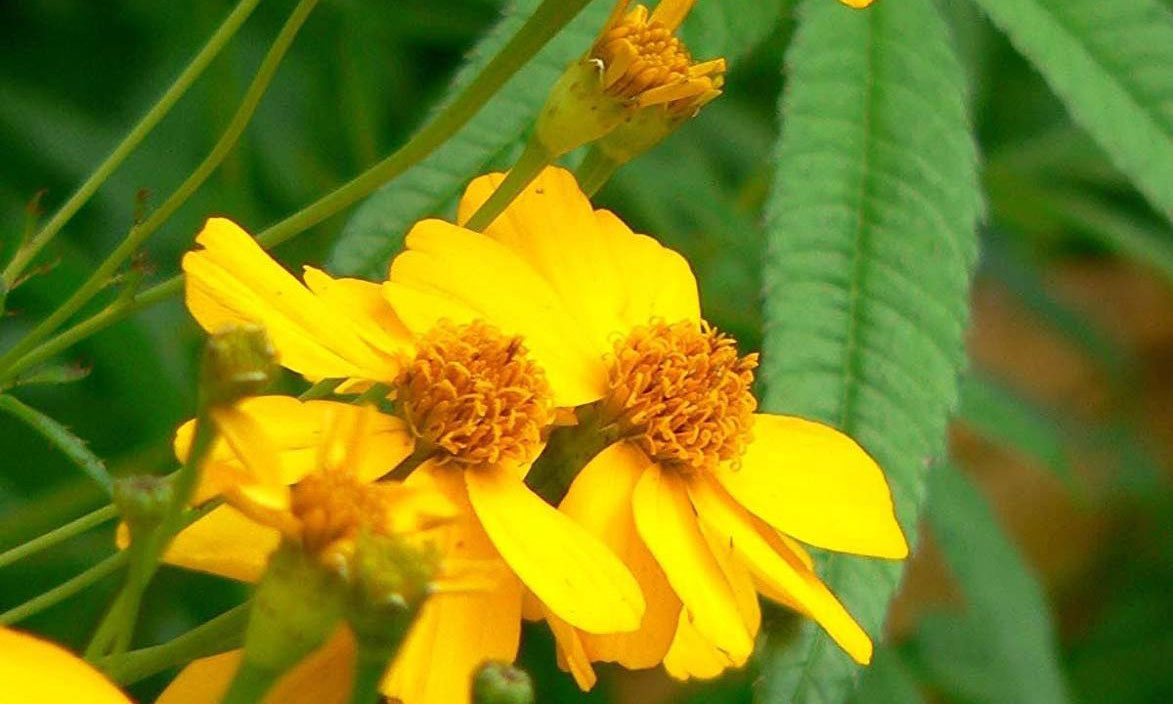
By Michelle Langmaid, Volunteer & Production Coordinator.
There is a bookshelf here in our lab lined with five-ring binders containing hard copies of original collection information for nearly all of the 1,900 accessions in the seed bank. Recently as I dove into these volumes looking for the origins of our Tagetes lucida (yerba anís), I was a little deflated by what I found: “Collected on roadside. Very common.” In the notes section, the collector wrote simply, “Tea”. This was back in 1986 in a small town in Chihuahua, Mexico, and one is left to ponder the circumstances of that day. To lessen my annoyance at the lack of detail, I told myself they were probably tired and hungry, needing nourishment, perhaps with a bit of a stomach ache. If that were the case, they would have indeed been lucky to stumble upon an abundant patch of yerba anís!

We are growing yerba anís this season as part of our Adopt-A-Crop campaign to bring back quantities of select seeds in the vault. With only a handful of herbs in the Native Seeds/SEARCH collection, it’s especially exciting to grow it here at the Conservation Center in Tucson! We started the seeds in a tray, biting our nails during the 3 ½ weeks it took for them to germinate, and finally transplanted them into a semi-shaded area that’s easy to baby-sit. They’re finally at a stage where we can harvest some of the leaves for a taste test! First up: tea.

We tried both fresh and dried leaves to make tea, and you can tell that it’s good for you with the first sip. It’s a little bit sweet, with a slight minty flavor that’s so refreshing on these hot, monsoon days. I just want to grow fields of it and serve it to all of Tucson! Of course the alternative to this outlandish idea is that you, dear reader, could grow it in your backyard, in a pot, or wherever you can find a nice patch of dirt! For the most part, herbs thrive in places just like where our Tagetes was found: in disturbed, unamended roadside soils, often volunteering year after year. If you’re new to gardening in the Southwest (or anywhere), herbs are often a great place to start.
Later, on Monday evening, we made Gin n’ Eggs. You know, that old Arizona favorite where you hard boil your eggs in gin and then mash them up with mayonnaise and more gin? Just kidding… we made them separately. Collections Curator, Sheryl, brought in fresh eggs from The Girls at home and scrambled them with a bit of cream cheese, a handful of yerba anís, salt and pepper. Garnished with a bit of DiMeglio Arugula, which is incredibly spicy when it's 100+ degrees, this was hands-down the best egg dish I’ve ever had.

We did indeed try our hand at mixology - muddling fragrant, fresh yerba anís leaves with lemon, sugar, and then adding elderflower liqueur (fancy!), gin, and some club soda. The yerba anís was too subtle here, and next time I might let the leaves steep in the gin for several weeks beforehand.
You can continue to follow and support the Adopt-A-Crop campaign on our website. You are also welcome to come over to the Conservation Center and see the plants in person! To schedule a tour of the garden and seed bank, just call us at 520-622-0830 or email info@nativeseeds.org.
